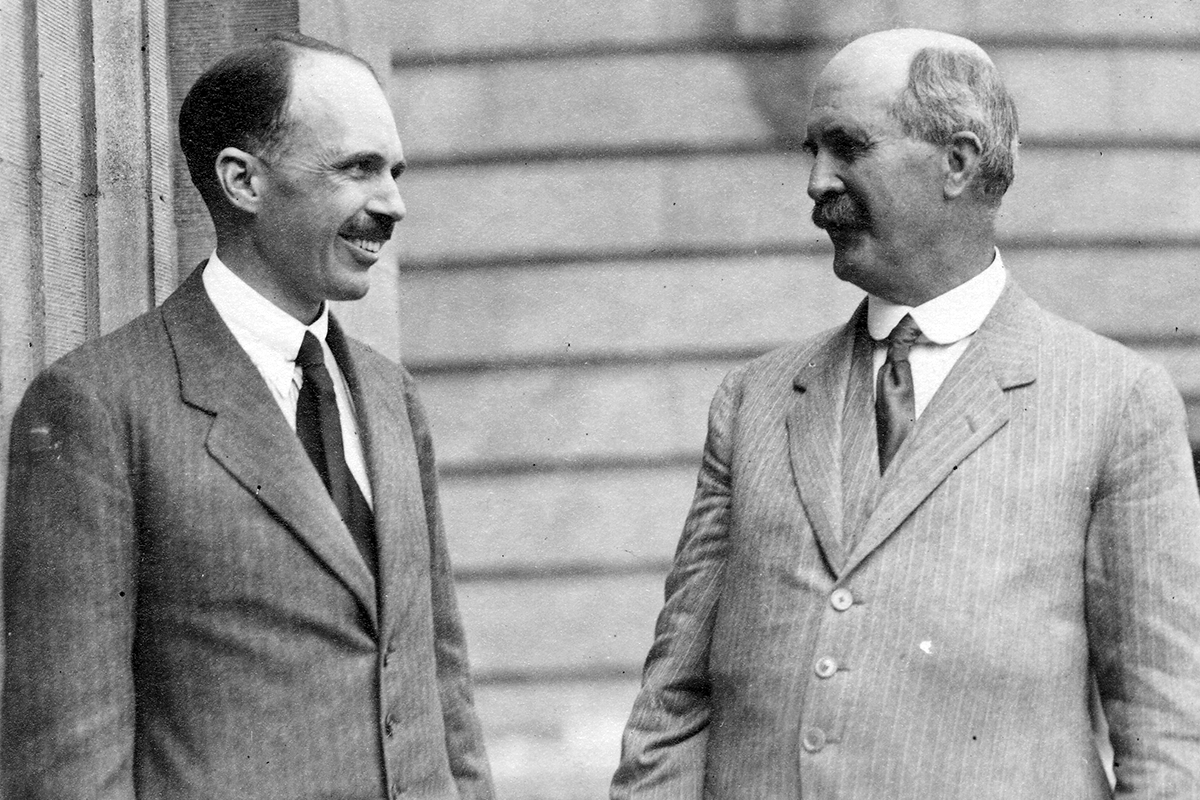They are father and son sharing the same Nobel prize: Who are William Henry and William Lawrence Bragg?
In the history of the Nobel, Braggs are the first and only father and son to share the prize of the same year. British physicists.

‘William Henry Bragg was born on July 2, 1862, in Wigton, Westward, in the Cumberland region. After completing his mathematics studies at Trinity College, Cambridge University in 1885, he became a professor of mathematics and physics at the University of Adelaide in Australia. During his twenty-three years in Australia, he became known not only for his successful lectures at the university but also for his activity in the scientific community, and in 1903 he was appointed chair of the Astronomy, mathematics, and physics department at the Australasian Association for the Advancement of Science. Accepting the invitation of the University of Leeds, he returned to his country in 1909 and assumed the professorship of physics in the Cavendish chair of the same university. Although he transferred to University College, London in 1915, he was sacked the following year due to World War I, and was appointed head of a research group at the Naval Experiment Station at Hawkcraio that developed techniques for locating submarines. Returning to his post-war post at University College, Bragg was elected president of the Royal Institution in 1923; Between 1935 and 1940 he was President of the Royal Society in London, of which he has been a member since 1907. He died in London on March 12, 1942.
Sir William Lawrence Bragg, CH, OBE, MC, FRS (31 March 1890 – 1 July 1971) was an Australian-born British physicist and X-ray crystallographer, discoverer (1912) of Bragg's law of X-ray diffraction, which is basic for the determination of crystal structure. He was joint recipient (with his father, William Henry Bragg) of the Nobel Prize in Physics in 1915.
W H Bragg, who received the title "Sir" in 1920, shared the 1915 Nobel Prize in Physics with his son W L Bragg. In the history of the Nobel, Braggs is the first and only father and son to share the prize in the same year.
William Lawrence Bragg was born on March 31, 1890, in Adelaide, Australia, where his father was teaching. After graduating from the University of Adelaide in mathematics, he returned to England with his family in 1909. While studying physics and chemistry at Trinity College, Cambridge University, with the help of his father, he began to study the refraction of X-rays in crystals and became a lecturer at the same school in 1914. However, both his experimental research and his university tenure were interrupted by World War I. The physicist, who worked as the technical adviser of the British army in France and Belgium from 1915 to 1919 on techniques for locating enemy artillery with cannon sounds, was only 25 years old when he shared the 1915 Nobel Prize in Physics with his father for his contributions to crystallology. W. L. Bragg, who was professor of physics at the University of Manchester from 1919-1937, Cavendish professor of experimental physics at Cambridge University from 1938-1953, and president of the Royal Institution in 1954, was elected a Fellow of the Royal Society in 1921, and in 1941 he was named "Sir. ” and retired in 1965 and died on 1 July 1971 in Ipswich.
William Henry Bragg, in his first eighteen years at the University of Adelaide, focused on teaching rather than original scientific research and was known as a good speaker with his ability to present the subject clearly and colorfully in both university physics lectures and conferences. Moreover, Bragg, who studied only mathematics at Cambridge University, was more self-taught in physics, which he was interested in by following the lectures of J J Thomson in his last year at the university.
